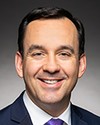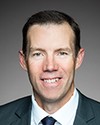Thank you for the question.
I think it's also important to remember that these legislative changes do not change the optionality of this legislation. Nobody who is not part of this, or who doesn't want to be part of this, will be impacted. Only those who have already committed to the process and are engaged will be impacted.
As Manny has said, we've all been working with communities. In some cases, many of these have come from communities. I mean, this is 55 pages of legislation that we have developed that's never been developed anywhere in the world. We sat down and did the best we could; everyone did. It's only when you put it on the ground and start to run with it that you start to find where there needs to be some clarification. We all say the same words, but it means different things at times.
I have a lot of respect for the legal profession—even though I'm an accountant—and the fact is that we've now had a lot of lawyers look at this and say, “What does this mean?” When we tell them what it means, they say, “That's not how I read it.” A lot of clarifications are being brought to this to bring certainty to it all. We think it is appropriate that it be done before June so that we can move on in the next year, and in particular bring some clarity around these issues to the natural resource development opportunities that will exist in the next year, not just in terms of equity participation but in terms of implementation, needing access to capital to participate in the building of these projects if you have businesses that need.... We need these things today.




